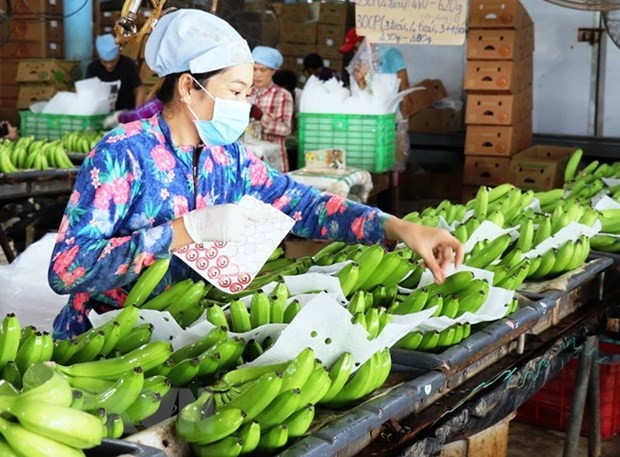
Fruit & vegetable exporters should tap into Northern Europe’s niche market: Newspaper
Latest
 |
| Vietnamese fruit and vegetable exporters are believed to hold considerable advantages under the EU-Viet Nam Free Trade Agreement. (Photo: VNA) |
The Vietnamese trade office in Sweden said that due to unfavourable weather conditions, Northern European countries very much depend on imported fruit and vegetables, with over 90 percent of fruit and 40 percent of vegetables coming from foreign sources.
The importation of tropical fruit has been growing quickly in recent years, opening up opportunities for both existing and new exporters from developing countries, including Viet Nam.
Developing countries account for more than 50 percent of the supply of fruit such as papaya, mango, pineapple, dates, tamarind, and passionfruit imported to the market, and 30 percent of avocado, figs, melons, and grapes.
The EU-Viet Nam Free Trade Agreement (EVFTA), which took effect on August 1, 2020, has also generated considerable advantages for Vietnamese firms, as most tariffs on fresh fruit and vegetables have been slashed to zero percent, the trade office noted.
Despite the optimistic outlook, Cong Thuong wrote, the market is relatively small compared to others in Europe. It’s also not easy for new exporters to compete with multilateral fruit and vegetable providers, logistics firms, and packaging companies with a long presence there.
Vegetables grown in Europe now account for 90 percent of those imported into Northern Europe, while those from developing nations stand at less than 10 percent.
Off-season produces like tomatoes and bell peppers are often provided by countries near Northern Europe. Geographical distance and a lack of direct air routes to the region also pose certain difficulties for Viet Nam’s fruit and vegetable exports.
The newspaper suggested Vietnamese companies consider producing organic and convenience products, pointing out European consumers’ increasing preference for healthy diets with clean and natural food, as well as those that serve their busy lifestyles.
To make use of this trend, they should ensure that product quality meets requirements, the article said.
It also noted that more attention needs to be paid to sustainable and responsible production and business practices, adding that products will be accepted by Northern European consumers if they comply with sustainability standards.
Brand building and product storytelling are also tools necessary for marketing new products, particularly those for niche markets, according to the paper.























